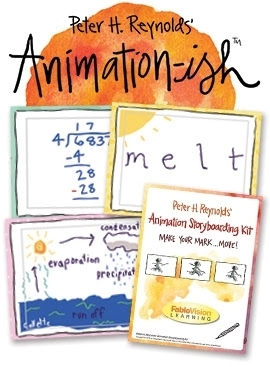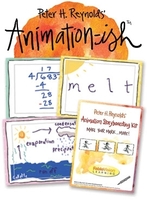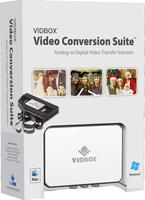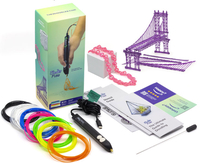Animation-ish Online

Description
Animation-ish is an easy-to-use animation program that inspires creativity and allows K-12 students to "show what they know."
- Sparks creative thinking and imagination.
- Provides engaging activities that integrate creativity across the curriculum.
- Helps teachers make exciting lessons that represent content visually.
- Boosts technology literacy skills.
- Teaches basic concepts in animation and graphic design.
Animation-ish includes three levels that provide students and teachers from K-12 with a fun, rewarding experience that fosters the ability to animate across the curriculum with confidence.
- Wiggledoodle-ish provides a simple set of tools to draw, trace, and animate in just three frames. You can also import and trace any graphic. Creative and fun!
- Flipbook-ish includes an infinite number of frames so you can create longer animations that teach more substantial content.
- Advanced-ish allows for more complex animations using a foreground, background, and a mover tool that enables fluid movement of objects across the screen.
Designed by award-winning author, illustrator and educator Peter H. Reynolds, Animation-ish includes:
- Curriculum-based activities aligned to national standards.
- Over 50 "Inspire Me" video clips featuring Peter H. Reynolds.
- "Project Vault" filled with Peter's drawings and starter ideas.
- Online animation lessons from Peter and the animators at FableVision.
- "Share" feature for one-click exporting in multiple formats, including .swf, .mov, .avi and more.
- "Import" feature for incorporating bitmap images.
- Vector-based lines, pressure sensitive drawing, tweening, and tracing.
Animation-ish Online
Free Shipping
- Publisher: FableVision
- Grade Level: K-12
- Item #: FAB006LC
| Single User License 12-months #FAB006-1 |
Price: $24.00 SRP: $25.00 | |
| Classroom 25 students + 1 Teacher 12-months #FAB006-25 |
Price: $194.00 SRP: $200.00 |
Features and Benefits
The possibilities for using animation in your classroom are endless! You will find that animation is a useful tool for engaging students and illustrating difficult concepts. Animate to enliven your lessons and assignments, and have your students create their own animations. As they find ways to visually represent what they are studying, students reach a new understanding of the material and commit what they are learning to memory. Encourage your students to communicate what they have learned by sharing their animations with teachers, parents or peers.
Animation-ish and the Standards
Standards provide a vision of competence and educational effectiveness, but without creating a mold into which all must fit. Animation-ish supports the National Standards for Arts Education and the latest ISTE Standards for Students. Students:
- apply subjects, symbols, and ideas in their artworks and use the skills gained to solve problems in daily life.
- select media, techniques, and processes; analyze what makes them effective or not effective in communicating ideas; and reflect upon the effectiveness of their choices.
- select and use the qualities of structures and functions of art to improve communication of their ideas.
- integrate visual, spatial, and temporal concepts with content to communicate intended meaning in their artworks.
- use subjects, themes, and symbols that demonstrate knowledge of contexts, values, and aesthetics that communicate intended meaning in artworks.
- describe ways in which the principles and subject matter of other disciplines taught in the school are interrelated with the visual arts.
- know the differences between materials, techniques, and processes.
- use different media, techniques, and processes to communicate ideas, experiences, and stories.
- use art materials and tools in a safe and responsible manner.
- select and use subject matter, symbols, and ideas to communicate meaning.
- understand there are various purposes for creating works of visual art.
ISTE Standards for Students:
- demonstrate creative thinking, construct knowledge, and develop innovative products and processes using technology.
- apply existing knowledge to generate new ideas, products, or processes.
- create original works as a means of personal or group expression.
- use digital media and environments to communicate and work collaboratively, including at a distance, to support individual learning and contribute to the learning of others.
- interact, collaborate, and publish with peers, experts, or others employing a variety of digital environments and media.
- communicate information and ideas effectively to multiple audiences using a variety of media and formats.
- contribute to project teams to produce original works or solve problems.
- apply digital tools to gather, evaluate, and use information.
- plan strategies to guide inquiry.
- use critical thinking skills to plan and conduct research, manage projects, solve problems, and make informed decisions using appropriate digital tools and resources.
- identify and define authentic problems and significant questions for investigation.
- plan and manage activities to develop a solution or complete a project.
- collect and analyze data to identify solutions and/or make informed decisions.
- use multiple processes and diverse perspectives to explore alternative solutions.
- demonstrate personal responsibility for lifelong learning.
- exhibit leadership in digital citizenship.
The following is a selection from What Students Should Know and Be Able to Do in the Arts, from the National Standards for the Arts Education:
- Knowing and practicing the arts disciplines are fundamental to the healthy development of children's minds and spirits. That is why, in any civilization—ours included—the arts are inseparable from the very meaning of the term "education."
- The arts are worth studying simply because of what they are. Their impact cannot be denied. Throughout history, all the arts have served to connect our imaginations with the deepest questions of human existence: Who am I? What must I do? Where am I going? Studying responses to those questions through time and across cultures--as well as acquiring the tools and knowledge to create one's own responses--is essential not only to understanding life but to living it fully.
- The arts are used to achieve a multitude of human purposes: to present issues and ideas, to teach or persuade, to entertain, to decorate or please. Becoming literate in the arts helps students understand and do these things better.
- The arts are integral to every person's daily life. Our personal, social, economic, and cultural environments are shaped by the arts at every turn.
- There is ample evidence that the arts help students develop the attitudes, characteristics, and intellectual skills required to participate effectively in today's society and economy. The arts teach self-discipline, reinforce self-esteem, and foster the thinking skills and creativity so valued in the workplace. They teach the importance of teamwork and cooperation. They demonstrate the direct connection between study, hard work, and high levels of achievement.
- Arts education benefits the student because it cultivates the whole child, gradually building many kinds of literacy while developing intuition, reasoning, imagination, and dexterity into unique forms of expression and communication. By studying the arts, students stimulate their natural creativity and learn to develop it to meet the needs of a complex and competitive society. And, as study and competence in the arts reinforce one other, the joy of learning becomes real, tangible, and powerful.






